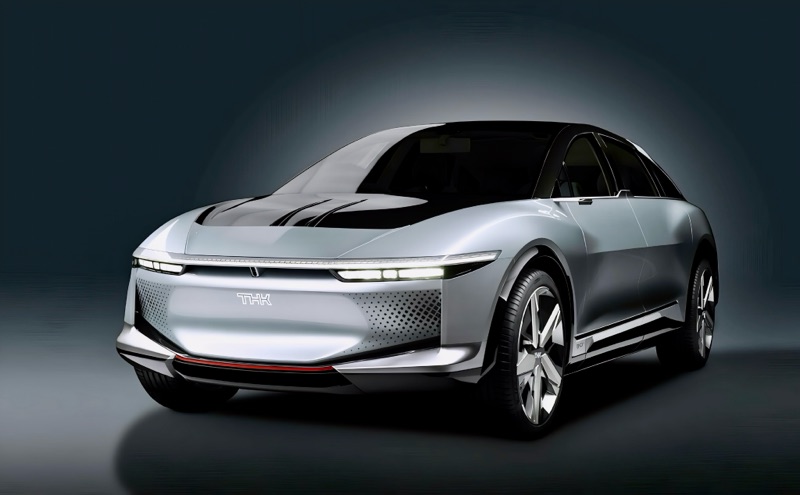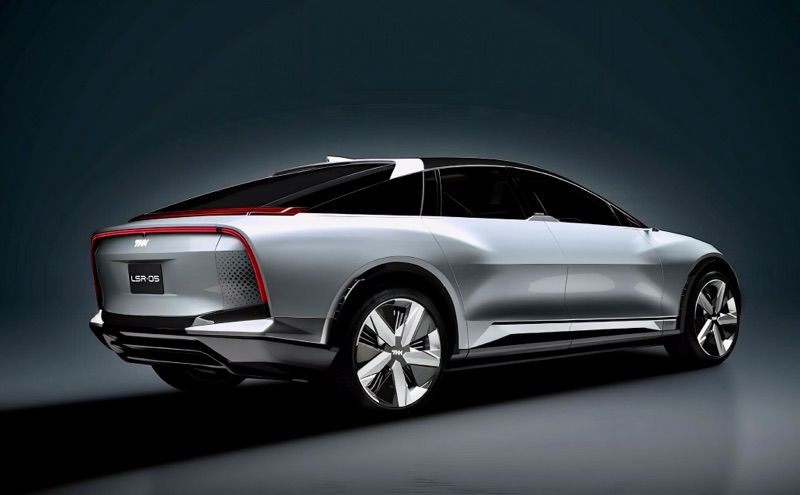𝐓𝐇𝐊 𝐋𝐒𝐑-𝟎𝟓 𝐏𝐫𝐨𝐭𝐨𝐭𝐲𝐩𝐞: 𝕁𝕒𝕡𝕒𝕟 𝔽𝕠𝕣𝕘𝕠𝕥𝕥𝕖𝕟 𝕃𝕖 𝕄𝕒𝕟𝕤 𝔻𝕣𝕖𝕒𝕞 𝕄𝕒𝕔𝕙𝕚𝕟𝕖
Discover the story of the THK LSR-05 prototype—a rare, radical JDM race car built to conquer Le Mans. Learn about its engineering, legacy, and place in Japan’s forgotten motorsport history.

THK LSR-05 Prototype: The Mysterious JDM Race Car Built to Conquer Le Mans
In the world of JDM legends, names like Nissan Skyline GT-R and Toyota Supra dominate the spotlight. But beneath the surface lies a handful of ultra-rare prototypes that were built not for the streets—but for the world stage of endurance racing. One of the most intriguing? The THK LSR-05.
This mysterious prototype, developed in the early 1980s by Japanese industrial giant THK Co., Ltd, was Japan’s stealth entry into the elite world of Le Mans-style endurance racing. And while it never raced officially, its engineering and design left a lasting impression on motorsport purists.

Let’s take a deep dive into the THK LSR-05—Japan’s forgotten Le Mans dream machine.
What Is the THK LSR-05?
The THK LSR-05 (Le Mans Special Racing car – 05) was a prototype race car created as part of THK’s experimental venture into motorsports. THK, best known for precision linear motion systems (used in robotics and automotive assembly lines), sought to prove their engineering prowess by building a Group C-inspired prototype from scratch.
Designed in collaboration with Mooncraft, a Japanese racing design studio known for aerodynamic innovation, the LSR-05 was built for speed, reliability, and low drag. Though it never made it to Le Mans, the project was technologically ahead of its time.
Radical Design & Engineering
The THK LSR-05 was a pure-blooded race machine from the ground up, and it showed. With design cues taken from Porsche 956s and Nissan R90CKs, the LSR-05 fused aerodynamics, lightweight construction, and modular chassis tech.
Key Features:
- Monocoque chassis with aluminum honeycomb core
- Fully enclosed underbody with ground effects for high-speed stability
- Aerodynamic nose cone and large rear wing
- Weight estimated around 800 kg (1,763 lbs)
The prototype featured modular components, allowing for quick drivetrain and suspension swaps—an innovation rare even among high-end prototypes of the era.
Powertrain: Japanese Muscle Meets European Tuning
Although the exact engine configurations varied during development, early prototypes reportedly used a twin-turbocharged Nissan VG30ET V6, similar to the one used in the Nissan Fairlady Z and IMSA racers.
Estimated Output:
- 600+ horsepower
- Mid-engine layout
- Top speed: 320 km/h (198 mph)
There were also rumors of a potential rotary-powered variant, likely as a nod to Mazda’s motorsport efforts—but this was never confirmed.
Why It Never Raced
Despite its promise, the THK LSR-05 never made it to the starting line at Le Mans or any international endurance event. The reasons?
- Corporate Strategy Shift – THK reprioritized its core industrial business over motorsport.
- High Development Costs – Building a competitive Le Mans prototype required millions in R&D, logistics, and testing.
- Regulatory Changes – FIA Group C regulations were evolving quickly in the mid-1980s, and the LSR-05 risked obsolescence before debut.
Still, the project was not a failure—it proved Japan could build world-class prototype race cars. In fact, it helped inspire future Japanese Le Mans entries like the Toyota 88C-V and Mazda 787B.
A True JDM Unicorn
Only one known prototype of the LSR-05 exists today, making it one of the rarest JDM creations ever built. It occasionally appears at vintage car shows in Japan, where it draws quiet reverence from racing historians and engineers alike.
Why it matters to JDM enthusiasts:
- Rare Prototype Status – True one-off vehicle
- Historical Significance – Precursor to Japan’s Le Mans legacy
- Underground Legend – Known mainly among motorsport insiders
In a world obsessed with Skylines and Supras, the LSR-05 is a cult-level unicorn that embodies Japan’s ambition to conquer the world—not just with production cars, but through motorsport dominance.
Final Thoughts: The THK LSR-05 as a Symbol of What Could’ve Been
The THK LSR-05 may never have competed at Le Mans, but it remains a powerful symbol of Japan’s silent push toward global motorsport innovation in the 1980s. For collectors and fans of obscure JDM machines, the LSR-05 is more than a prototype—it’s a glimpse into a forgotten chapter of Japan’s racing ambition.
If you ever see one in person, take a moment. You’re not just looking at a race car. You’re looking at a piece of engineering art that dared to dream bigger than its time allowed.
Comments
Post a Comment